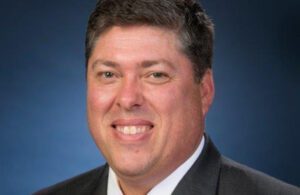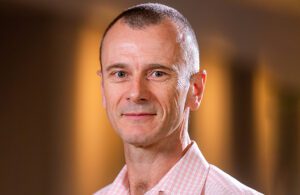
Boston Scientific Global Operations EVP Brad Sorenson [Photo courtesy of Boston Scientific]
Boston Scientific (NYSE: BSX) executives said two labor-shortage strategies are paying off in a big way for the medical device maker, which has around 41,000 employees across the globe.
Collaborative robotics and Spanish-speaking shifts are helping Boston Scientific deal with a global labor shortage that’s been especially acute in the U.S.
That’s according to Global Operations EVP Brad Sorenson and Supply Chain VP Paudie O’Connor, who recently spoke with DeviceTalks Editorial Director Tom Salemi about the difficulty of hiring workers.
“It’s hit us everywhere. Part of that was just general wage inflation. Although we don’t like the cost of that per se, that’s relatively easy to deal with, right? You give people raises and at least the supply continuity problem goes away,” Sorenson said.
“The bigger issue is, however, that if we used to want to hire 200 people because we had capacity growth that we needed, we’d just put an ad in the paper and do an open house and we could hire them. That’s not the case anymore,” he continued. “Frankly, just getting enough people to work has been difficult. So we’ve undertaken a very aggressive path to try to remove the human labor dependency for things that machines can do.”
Cobots lend a hand
As an example, Sorenson said about 30 percent of Boston Scientific employees “look through microscopes every day and make a go/no go decision” for product quality.
“Automated machine learning has really moved the ball on a machine’s ability to do that. And quite frankly, that’s probably not the most rewarding work that our workforce is doing,” Sorenson said. “We’ve started to put in more automation in those type of places to augment our direct labor capability and in parallel undertaken a dramatic change management approach through a program we call Grow, which is really around upskilling our direct labor, creating a better career path in places that have more value add.”
RELATED: Employees say Intuitive, Boston Scientific, J&J, Medtronic are among the best places to work in 2022
He reported “really good progress” through automated visualization and cobotics, or collaborative robots that work with product technicians or engineers on the line. Such technology could augment around a third of the Boston Scientific labor force, Sorenson said. And it doesn’t mean automation will lead to layoffs.
“We get the team on the bus with us,” Sorenson said. “There’s no pushback — ‘Hey robots are trying to take my job away.’ It’s, ‘I get it, you’re going to try to do the part of my job that I don’t particularly love doing every day and give me stuff that’s way more interesting and exciting so I can grow.’ So we think it’s pretty dramatic and in some parts of the organization we’ve made big leaps forward. We’ve been able to essentially hold labor flat while we’ve been seeing 15% to 20% increase in output.”

Boston Scientific Supply Chain VP Paudie O’Connor [Photo courtesy of Boston Scientific]
Boston Scientific’s Spanish solution
Another labor supply solution came from an employee at a plant in the Midwest who suggested hiring workers who only speak Spanish, O’Connor said.
The facility already had Spanish-speaking employees from Costa Rica who had transferred. After translating documentation into Spanish, the plan worked.
“We had a couple of shifts up and running in no time,” O’Connor said. “Word of mouth in that community really helped. That is growing to be like a standard stable in that organization. About probably 25% of the workforce are only-Spanish speaking. … It’s just phenomenal to see how it’s come together and each different community learning off each other. We’re giving Spanish classes to supervisors and engineers and anyone that wants to learn.”
With nearly $11.89 billion in annual revenue, Boston Scientific is the 12th largest medical device company, according to our 2022 Medtech Big 100 ranking.
Listen to the entire interview with Sorenson and O’Connor at DeviceTalks.com.